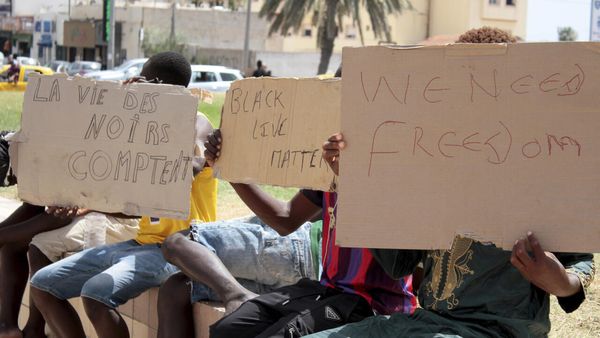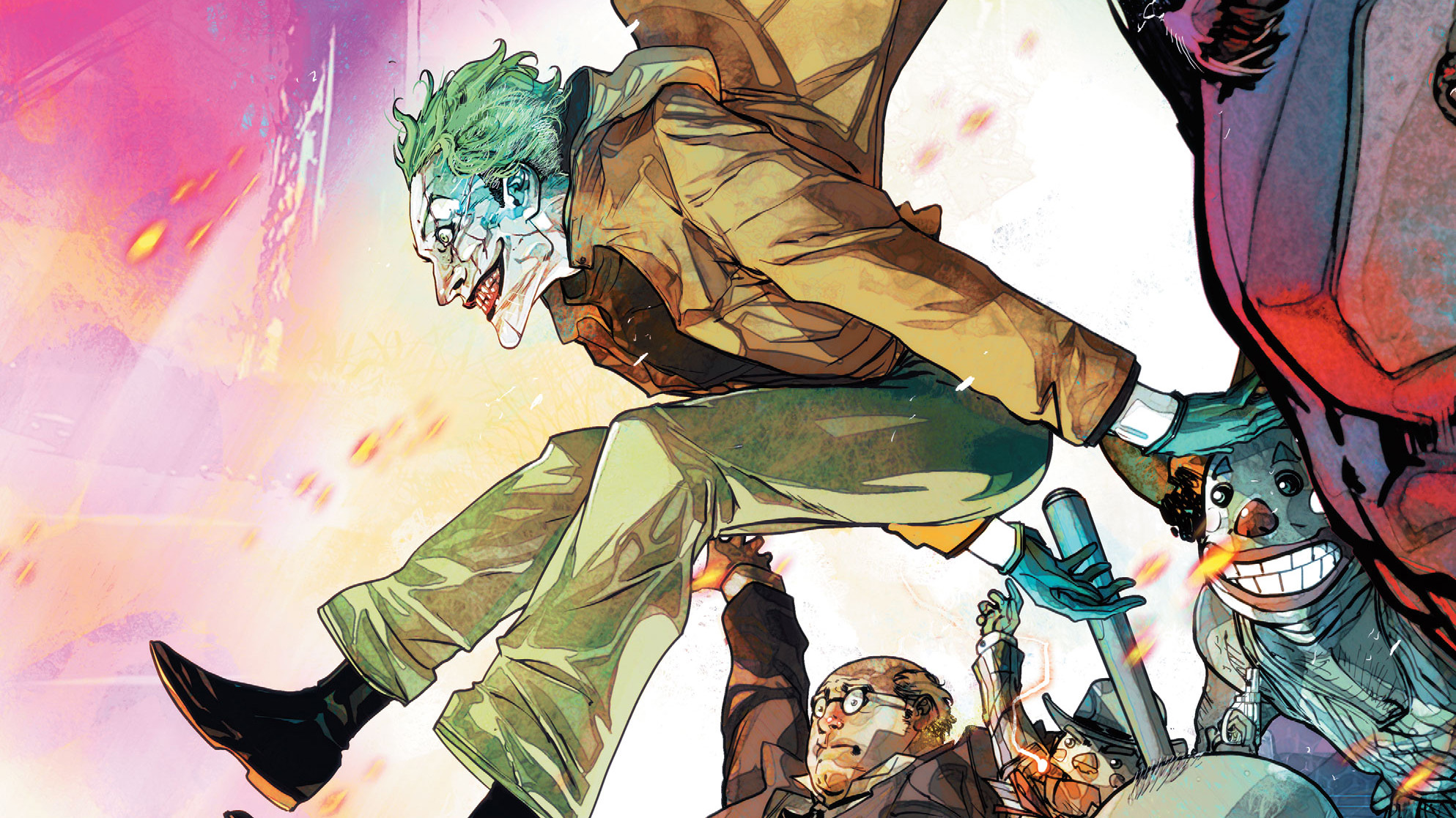
The Joker: The Man Who Stopped Laughing reaches its 12th and final issue this week. The limited series by writer Matthew Rosenberg, artist Carmine Di Giandomenico, colorist Romulo Fajardo Jr, and letterer Tom Napolitano, has followed Batman's nemesis as he attempts to take his particular brand of chaos and carnage global. In the meantime another Joker is still running rampant in Gotham.
There have been multiple Jokers in the Batman comics for some time now, though the how and why of it all has been a little confusing. This issue clears things up slightly, while retaining much of the mystery. It also puts a bloody cap on the spin-off series.
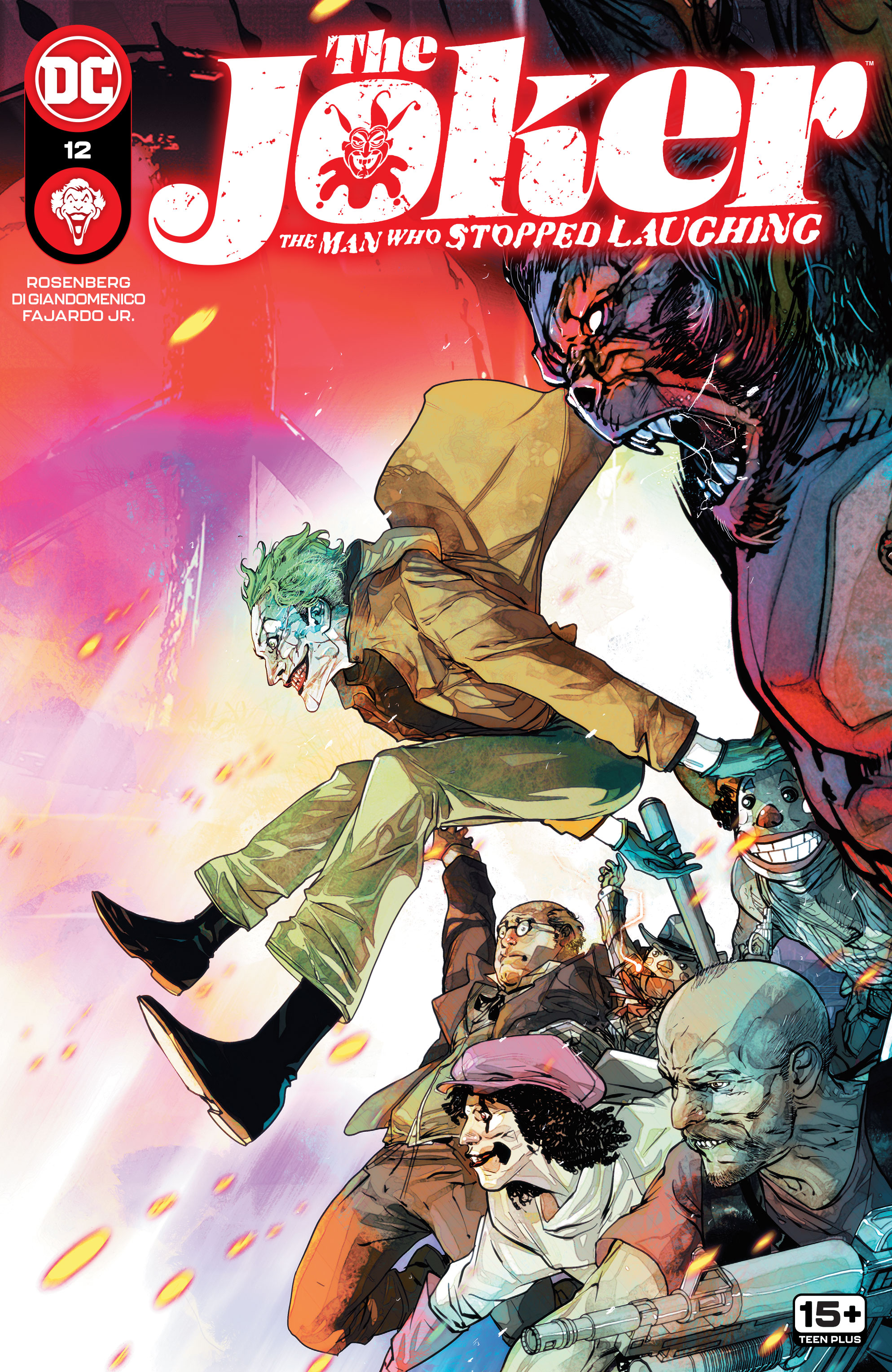
Spoilers for The Joker: The Man Who Stopped Laughing #12
In the new issue the rivalry between the two Jokers reaches a head - quite literally on the final page. At the end of the previous issue, one of the Jokers discovered that he was in fact John Keyser, a surgically-altered henchman who has come to believe that he is the real Clown Prince of Crime. He doesn't take this news well, feeling dejected and despondent until one of his henchmen points out that, "just because you're not him, doesn't mean you can't do fun stuff."
The "fun stuff" in question involves kidnapping Jason Todd - who has become a bit of a punching bag lately - and dosing him with Joker Toxin. This brings out Red Hood's psychotic side once more, which the John Keyser Joker (Faux-ker, anyone?) intends to use to kill his rival.
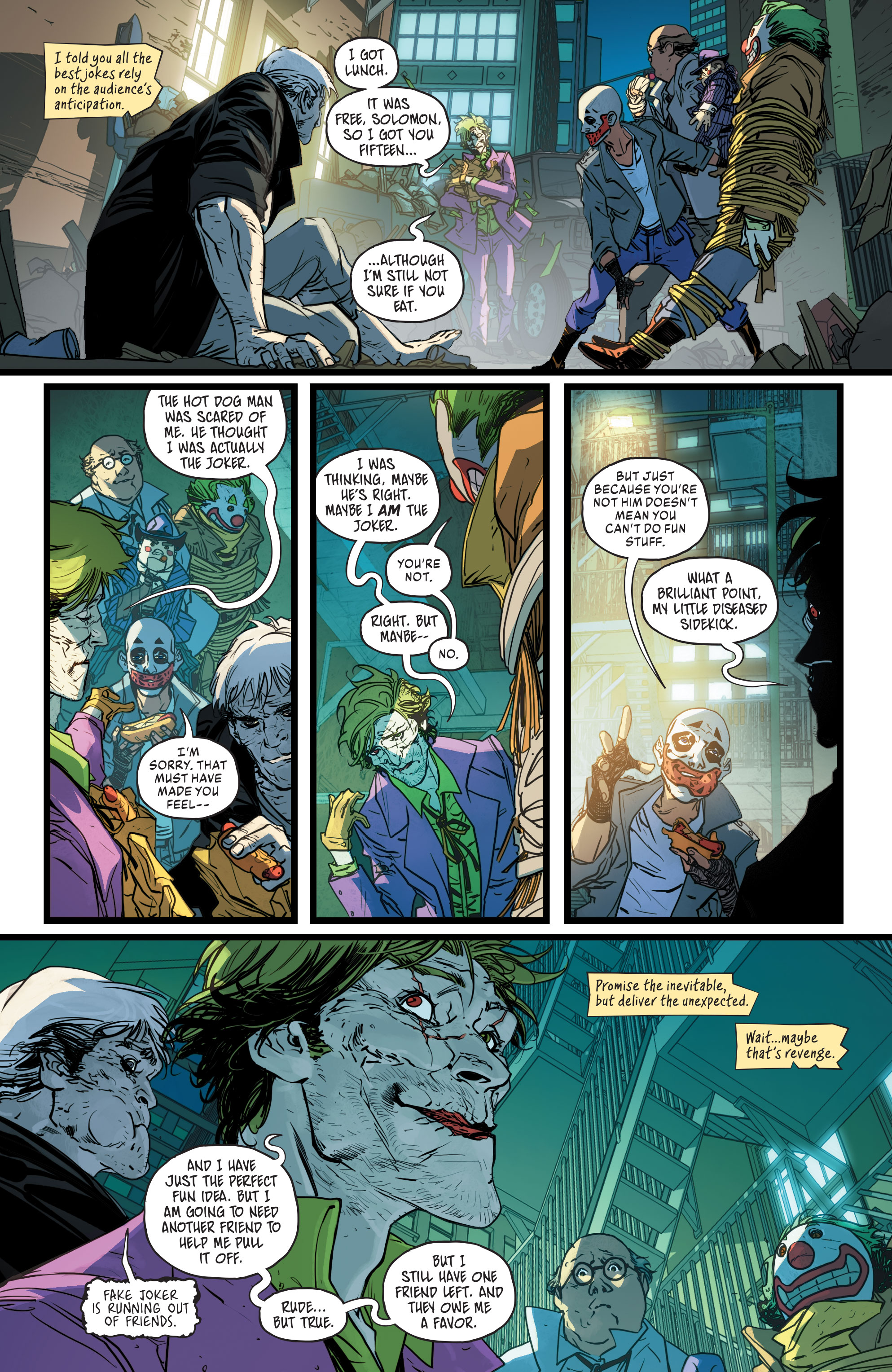
Of course, while Jason gets to rough up the Joker he fails to kill him. Instead, the rival clowns confront each other on a train packed with Joker Toxin as it speeds towards Gotham Central Station. They fight and bicker and laugh with each other before coming to the conclusion that calling this one a draw might actually be the best solution. They strike a deal: they both get to be the Joker "until one of us gets bored and kills the other."
That moment comes sooner than expected, however. The Jokers leap from the doomed train just before it is destroyed by Red Hood. Although they both survive plunging into a river, one of the Jokers rears up out of the water and murders the other. He emerges from the river carrying the other's severed head and it's left unclear if the "real" Joker or the John Keyser version is the survivor.
A brief history of the many Jokers
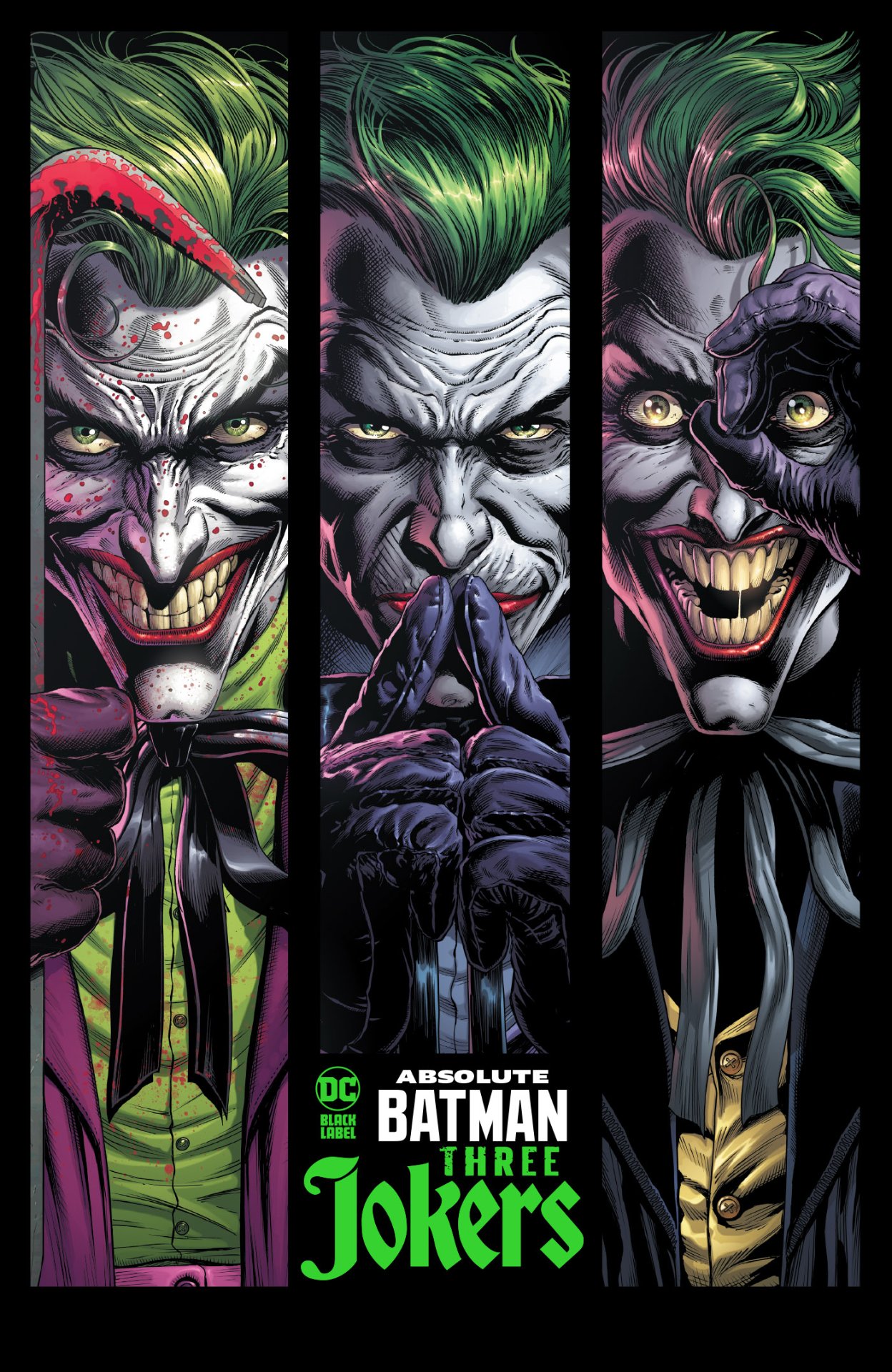
There have been multiple Jokers in Gotham for a few years now. The reasons for that, however, are a little fuzzy, and The Man Who Stopped Laughing doesn't really clarify the situation, even if this final issue does take one of them off the board.
Batman first learned that there was more than one Joker in Justice League's 2015-2016 'Darkseid War' arc, when Batman sat in the Mobius Chair and tried to learn the Joker's true name. Instead, he discovered that there are three separate versions of his mortal enemy at work.
This was explored further in 2020's Batman: Three Jokers Black Label series by writer Geoff Johns and Jason Fabok. This named the three different variants as the Criminal, the Clown, and the Comedian.
These three distinct characters all reflect the different MOs that the Joker has employed over the decades. The Criminal is the Golden Age Joker, a deadly plotter and schemer who leads the gang and who trained the other two. The Clown is the Joker as prankster, a chaotic figure implied to be the version of the character that murdered Jason Todd. The Comedian, meanwhile, is the sadistic psychopath of The Killing Joke, whose "one bad day" set him on the path of destruction.
That's a cool idea. Here's the thing, though - Three Jokers only holds a vague position in mainline DC continuity thanks to its status as a non-canon DC Black Label comic. It also makes less sense the more you stop and think about it. The Joker is such an anarchic figure that the idea three versions of him would not only co-exist but also work together doesn't really hold water.
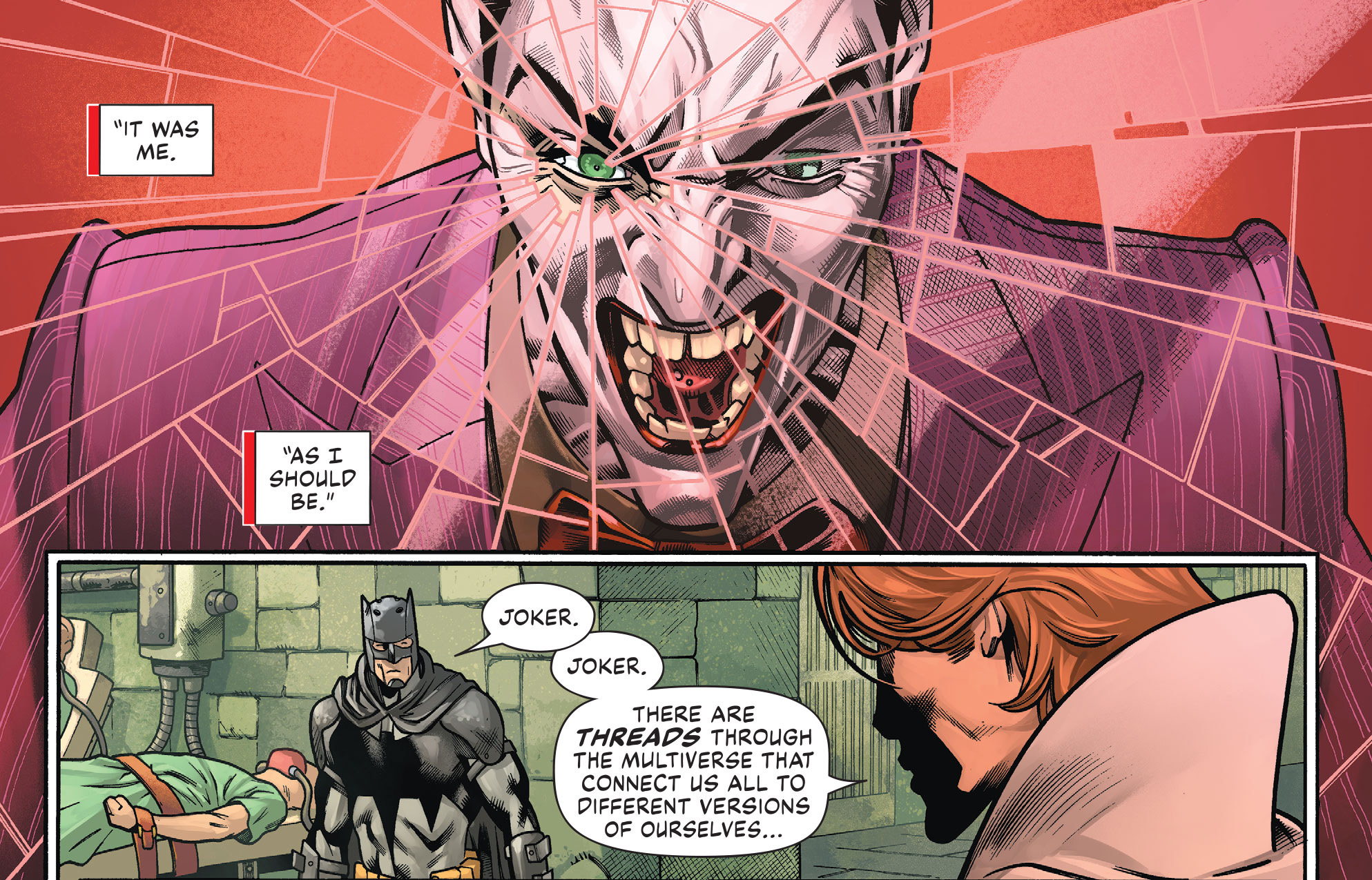
Perhaps something approaching an explanation can be found in Batman #134 and #135, published earlier this year. In those issues it was revealed that Red Mask - a brilliant scientist and villain from another universe who also goes under the name Darwin Halliday - desperately wanted to become the Joker. It turns out, however, that rather than transforming himself into the Joker, his experiments instead lead to the creation of many Jokers throughout the multiverse.
None of that is referenced in The Man Who Stopped Laughing #12, which is unconcerned with explaining things. Although Keyser and the "real" Joker are marked out as different people here, they're functionally the same agent of gleeful chaos - hence the ambiguity at the end of the final issue.
Real or fake? Keyser or Joker? Ultimately, it doesn't matter which character died this month and which lived. The Joker lives on, regardless of who they were before they adopted that name. And that, as the Clown Prince of Crime says earlier in the issue, is "sort of the point."
The Joker: The Man Who Stopped Laughing #12 is out now from DC.
Jason Fabok opens up about his work drawing Batman: The Three Jokers in this interview.





